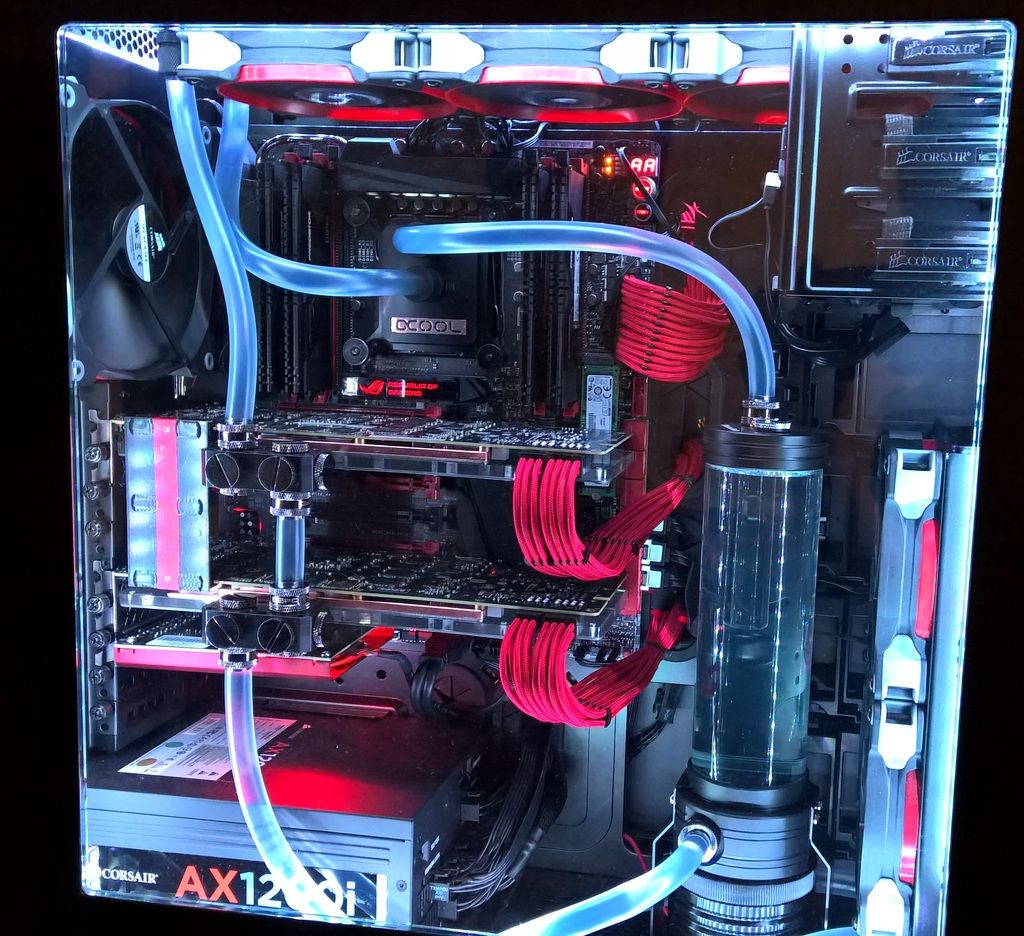Mungler
n00b
- Joined
- Oct 13, 2005
- Messages
- 34
I was browsing the interweb when I saw this article on another site about the gigabyte-geforce-gtx-980-ti-xtreme-gaming-waterforce. This is a watercooled, OC'd card out of the box but that 120mm rad looks like a slim one!!
So this is causing me to rethink my stand point on water cooling overkill.
I currently have a Corsair Hydro aio cooler for an i7 with a 120mm rad on it. This works fine and is nice and quiet. I don't overclock this machine so the performance vs. noise is great. I intend to add a 980ti to the system and was looking at making a custom loop for it. This was going to involve adding 2x 240mm rads in place of the current 120mm. For both balance in airflow as well as the increased thermal load of the GPU.
But now, even if I get a non-OC 980ti, I find myself asking if I would need more than a single extra 120mm??!?
Looking at the TDP of the 980ti and the i7, using a handy radiators spreadsheet I have used for a while, would suggest that this isn't possible unless I live inside the arctic circle and have fans running at speeds that wouldn't be too far from 12 on the Beaufort scale.
What do the rest of the OCP crowd think of this? What magic sauce is in these aio coolers that allows them to do this?
So this is causing me to rethink my stand point on water cooling overkill.
I currently have a Corsair Hydro aio cooler for an i7 with a 120mm rad on it. This works fine and is nice and quiet. I don't overclock this machine so the performance vs. noise is great. I intend to add a 980ti to the system and was looking at making a custom loop for it. This was going to involve adding 2x 240mm rads in place of the current 120mm. For both balance in airflow as well as the increased thermal load of the GPU.
But now, even if I get a non-OC 980ti, I find myself asking if I would need more than a single extra 120mm??!?
Looking at the TDP of the 980ti and the i7, using a handy radiators spreadsheet I have used for a while, would suggest that this isn't possible unless I live inside the arctic circle and have fans running at speeds that wouldn't be too far from 12 on the Beaufort scale.
What do the rest of the OCP crowd think of this? What magic sauce is in these aio coolers that allows them to do this?
Last edited:
![[H]ard|Forum](/styles/hardforum/xenforo/logo_dark.png)

